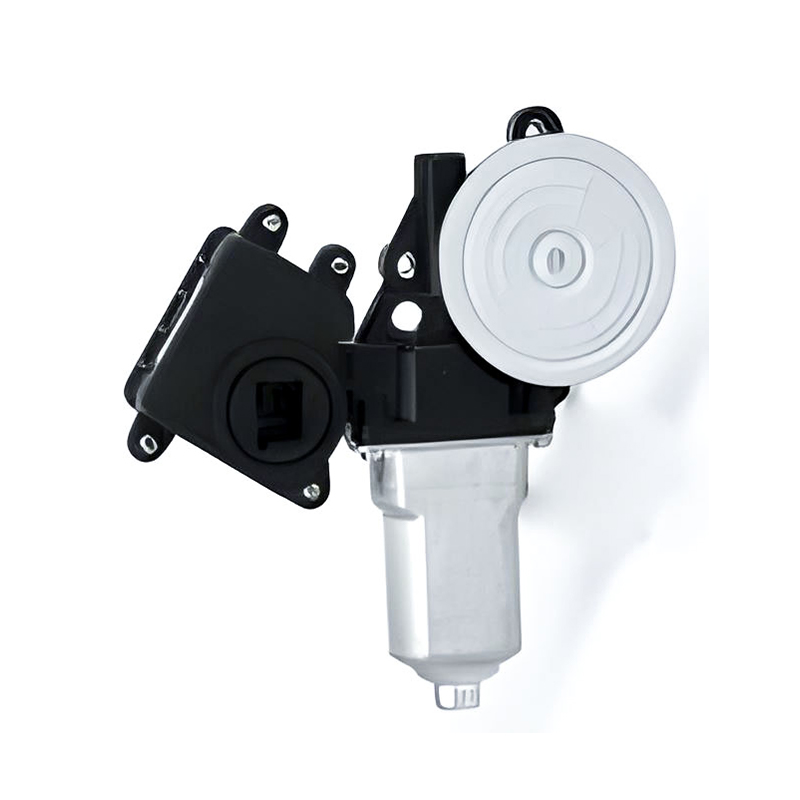Torque consistency in a wiper motor is essential to maintain uniform blade movement across the windshield, preventing stutters or irregular speeds that can compromise driver safety. Our engineering team has focused on refining the motor's internal mechanics and electrical control to stabilize torque output. This refinement not only improves wiper function but also contributes to the longevity of the motor by reducing mechanical stress.
The development process involved extensive testing under diverse conditions, including varying voltages, temperatures, and loads. These tests were conducted alongside evaluations of other key automotive motors, such as the power window actuator motor, which shares similar performance requirements. Like the wiper motor, the power window actuator motor must deliver consistent torque to ensure smooth window operation without abrupt stops or excessive force.
One technical improvement in the new wiper motor is the enhanced coil winding technique. This method helps achieve a more uniform magnetic field within the motor, which translates into stable torque generation. The coil design improvements have parallels with the design approaches used in the power window actuator motor and car door window regulator assemblies, both of which require precision to function reliably in tight automotive spaces.

The car door window regulator mechanism, driven by the power window actuator motor, is another component where torque consistency is vital. Inconsistent torque can advance to jerky window movements or even mechanical failures. Drawing on insights from the performance demands of these motors, the new wiper motor design incorporates better material selection for gears and bearings, reducing friction and wear, thus preserving torque consistency over the motor's service life.
Another focus area was the electronic control unit integrated with the wiper motor. This unit manages the motor's power input to adapt to changing conditions, such as heavier blade loads during snow or ice accumulation. Similarly, the control systems for power window actuator motors are designed to adjust torque delivery to match the resistance faced by the window regulator, preventing motor burnout and ensuring smooth operation. These shared control strategies highlight the importance of torque consistency in various automotive motor applications.
The compact design of the new wiper motor allows it to fit into modern vehicle engine bays without sacrificing performance. This design philosophy is also applied to power window actuator motors, which must integrate seamlessly with car door window regulator assemblies. Achieving a balance between size, power, and torque stability is critical in these compact spaces, where every millimeter counts.
Customer feedback from preliminary installations indicates that the new wiper motor delivers smoother blade movements and less noise during operation. This feedback is consistent with observed improvements in power window actuator motor-driven window systems, where smoother operation enhances the user experience. In both cases, maintaining consistent torque output is the key to these positive outcomes.
The durability of the new wiper motor is supported by the use of high-quality materials and precision manufacturing processes. Bearings and gear assemblies have been carefully engineered to withstand the repetitive torque cycles without degradation. This approach mirrors the durability considerations for the car door window regulator and its associated power window actuator motor, where longevity and consistent torque are equally important.
In practical terms, consistent torque delivery means that the wiper blades clear the windshield effectively at all speeds and under various environmental conditions. Drivers can rely on predictable wiper performance, which improves overall safety. Similarly, consistent torque in the power window actuator motor ensures that car windows move smoothly, providing convenience and preventing mechanical issues that could advance to costly repairs.
The success of this new wiper motor reflects a broader trend in automotive motor design, where engineers aim to harmonize mechanical components, electrical systems, and software control to meet demanding performance criteria. Understanding the interplay between the wiper motor, power window actuator motor, and car door window regulator helps in developing motors that fulfill their functions reliably without excessive maintenance.
Future developments will continue to focus on improving torque control algorithms and exploring new materials to further reduce friction and wear. These advancements will benefit not only wiper motors but also power window actuator motors and car door window regulators, pilot to more efficient and durable automotive systems overall.
In conclusion, achieving consistent torque delivery in the new wiper motor represents a significant step toward enhancing automotive safety and reliability. By leveraging advanced design techniques and integrating lessons from related components like the power window actuator motor and car door window regulator, this motor meets the performance demands of modern vehicles. Drivers can expect steady, smooth wiper operation regardless of conditions, contributing to safer journeys and improved vehicle longevity.
Your email address will not be published. Required field are marked*